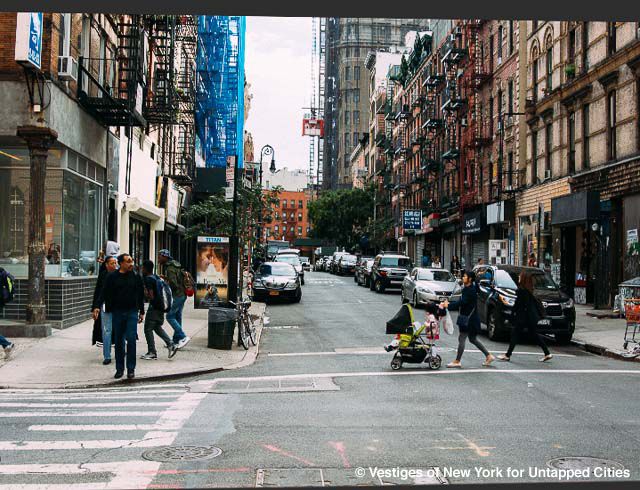NYC’s Forgotten ‘War on Christmas Trees’
Discover how an obscure holiday crackdown affects festive street vendors today!


Welcome to a new feature within our Vintage Photography column, the Then & Now series brought to you by Vestiges of New York, a photography project documenting how the New York City streets have changed. This image is just a teaser–drag the cursor left and right on the photograph to compare Orchard Street (viewed from Hester Street) between 1898 and today. Although much of the architecture remains the same, only a few traces of the pushcart peddlers exist now. Well-known Lower East Side establishments like Russ & Daughters, MOSCOT, and Cohen’s Fashion Optical, all founded by enterprising street peddlers, connect us to that long-gone world in bits and pieces.
Straight from the July 30, 1893 edition of the New York Times, a columnist offered a scathing critique of street life in Lower East Side. It was a world far removed from today’s trendy boutiques, the streets teeming with pushcarts purveying all manner of wares. 25,000 peddlers lined the streets, many Eastern European immigrants that had transformed the streets into a bustling open-air market reminiscent of old-world Europe. By 1900, the peddlers’ marketplace on Hester Street spilled into surrounding streets—Orchard, Essex, Norfolk, Suffolk, Ludlow.
“Filthy persons and clothing reeking with vermin are seen on every side. Many of these people are afflicted with diseases of the skin. Children are covered with sores, and hundreds of them are nearly blind with sore eyes. . . . [W]here these people live is absolutely impassable for wheeled vehicles other than their pushcarts. . . . This neighborhood. . . is the eyesore of New York and perhaps the filthiest place on the western continent.”
Stay tuned for more from this series! Check out more from our Vintage Photography column.
Subscribe to our newsletter